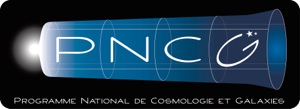Colloque national CMB-France #1
→
Europe/Paris
Description
Cette initiative vise à mettre en place une animation scientifique au niveau national autour des études CMB.
La première action associée que nous souhaitons mettre en place est l’organisation d’un colloque national CMB avant l’été.
Nous proposons ce premier colloque sous la forme de 2 demi-journées le 2 et 3 juin 2021, en distanciel.
L’agenda est en cours de finalisation mais l’idée de ces colloques est de:
- présenter les nouveautés scientifiques et les nouveaux résultats dans le domaine
-
donner un statut sur l’avancement des expériences ou des projets en cours
- permettre aux jeunes (post-doc, PhD) de présenter leur travail
N’hésitez pas à nous contacter ou à soumettre vos propositions de presentation
Les informations de connexion seront envoyées par la mailing-liste cmb-france. Pensez à vous inscrire.
 Cette action est soutenue par le PNCG.
Cette action est soutenue par le PNCG.Inscription
Inscription
Participants
